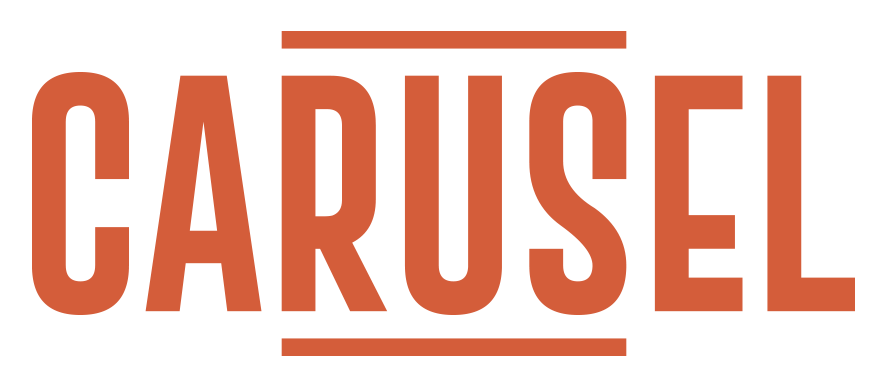10 April 2020
Easter in Russia. Easter Dessert Recipes

The kulichs, Russian Easter biscuits, in the church
There are some holidays that always fill us with great joy and happiness. According to multiple studies, the most popular holidays in Russia are the New Year's Eve and Easter. If the New Year's Eve for Russians is a substitute of Christmas celebrations in other countries, Easter unites all the Christians.
Even in Soviet times when all religious holidays were banned, we secretly celebrated Easter with our families. And although in general Easter is celebrated by Orthodox Christians with the difference of one week from Protestants and Catholics, for all Christians it is not only a religious holiday, but a symbol of joy, vital force and hope for the brighter future. And for this year it is as important as ever!
Here we will tell you about the Easter celebrations in Russia and share with you the recipes of typical Easter desserts – kulich, the Russian Easter bread, and paskha, sweet cheese dessert.
There are some holidays that always fill us with great joy and happiness. According to multiple studies, the most popular holidays in Russia are the New Year's Eve and Easter. If the New Year's Eve for Russians is a substitute of Christmas celebrations in other countries, Easter unites all the Christians.
Even in Soviet times when all religious holidays were banned, we secretly celebrated Easter with our families. And although in general Easter is celebrated by Orthodox Christians with the difference of one week from Protestants and Catholics, for all Christians it is not only a religious holiday, but a symbol of joy, vital force and hope for the brighter future. And for this year it is as important as ever!
Here we will tell you about the Easter celebrations in Russia and share with you the recipes of typical Easter desserts – kulich, the Russian Easter bread, and paskha, sweet cheese dessert.
Difference between Catholic, Protestant and Orthodox Easter Dates
In 2020, Western Easter is celebrated on April, 12 and Orthodox Easter - on April, 19. Why?
Catholic and Protestant's Easter dates are linked to the Gregorian calendar and Orthodox Church relies on the Julian calendar. This difference is a result of the 16th century reform when the western Christians accepted the Gregorian calendar and the Orthodox Church continued to use the Julian calendar. In addition to that, all Christian churches take into account other factors, such as the first full moon after the March equinox (March, 21) to establish the dates of Easter for each year. Sometimes the Catholic, Protestant and Orthodox Easter dates coincide - as it happened in 2017 and should happen in 2025.
In 2020, Western Easter is celebrated on April, 12 and Orthodox Easter - on April, 19. Why?
Catholic and Protestant's Easter dates are linked to the Gregorian calendar and Orthodox Church relies on the Julian calendar. This difference is a result of the 16th century reform when the western Christians accepted the Gregorian calendar and the Orthodox Church continued to use the Julian calendar. In addition to that, all Christian churches take into account other factors, such as the first full moon after the March equinox (March, 21) to establish the dates of Easter for each year. Sometimes the Catholic, Protestant and Orthodox Easter dates coincide - as it happened in 2017 and should happen in 2025.

Christ is risen! (1913) by Niko Pirosmani
How Easter is Celebrated in Russia
For Orthodox Christians, it is the main holiday of the year. Easter Celebrations in Russia are the culmination of 40 days of a very strict Great Lent, with no meat, fish, eggs and dairy products permitted. Nowadays not everyone follows it, just like not all of us are visiting church services of the last week of the Lent, but we all celebrate Easter in the end.
On Saturday before Easter people come to church to bless their painted eggs, kulichs and paskhas before putting them on a festive table or exchanging them with the family and friends on the following day. And at midnight, after the procession of believers around the cathedral, the priest opens the closed doors of the temple that symbolizes the opening of the doors of the Lord's tomb and announces to everyone that Christ is risen! And everyone answers him altogether - He is truly risen! Imagine this night service with lit candles, loud chimes and choir singing - it really is impressive!
How Easter is Celebrated in Russia
For Orthodox Christians, it is the main holiday of the year. Easter Celebrations in Russia are the culmination of 40 days of a very strict Great Lent, with no meat, fish, eggs and dairy products permitted. Nowadays not everyone follows it, just like not all of us are visiting church services of the last week of the Lent, but we all celebrate Easter in the end.
On Saturday before Easter people come to church to bless their painted eggs, kulichs and paskhas before putting them on a festive table or exchanging them with the family and friends on the following day. And at midnight, after the procession of believers around the cathedral, the priest opens the closed doors of the temple that symbolizes the opening of the doors of the Lord's tomb and announces to everyone that Christ is risen! And everyone answers him altogether - He is truly risen! Imagine this night service with lit candles, loud chimes and choir singing - it really is impressive!
During Easter Sunday instead of Hello! we greet each other with Christ is risen! - He is truly risen!
Many families prepare the festive table on Sunday in advance, with great care and in line with Easter traditions. In Russia, the main attributes of the Easter table are painted eggs and two desserts: the kulich, special sweet bread, baked in the church-like shape and decorated with the cross and letters XB, the capital letters of the Russian words Christ is risen; and the paskha, made of cottage cheese, raisins, almonds and spices, and prepared in the form of a pyramid as a symbol of the Holy Sepulcher.
Find the kulich and paskha recipes in the continuation of this article!
Many families prepare the festive table on Sunday in advance, with great care and in line with Easter traditions. In Russia, the main attributes of the Easter table are painted eggs and two desserts: the kulich, special sweet bread, baked in the church-like shape and decorated with the cross and letters XB, the capital letters of the Russian words Christ is risen; and the paskha, made of cottage cheese, raisins, almonds and spices, and prepared in the form of a pyramid as a symbol of the Holy Sepulcher.
Find the kulich and paskha recipes in the continuation of this article!
Why do we paint eggs for Easter?
We paint eggs, the best-known symbol of Russian Easter abroad, on the previous Thursday, also known as Holy Thursday or "Clean Thursday." It is a day to clean our bodies and our houses, when some of us visit banyas (Russian bathhouses).
The most common colour for painted eggs is red. In Russia this colour has always had the special meaning. Red in Old Russian was also the word for something nice and beautiful. As you might know, Moscow's main square is called Red Square - in the meaning that it is beautiful. Red Easter eggs remind us of an egg presented by Mary Magdalene to Emperor Tiberius that changed its colour to justify the resurrection of Christ.
We paint eggs, the best-known symbol of Russian Easter abroad, on the previous Thursday, also known as Holy Thursday or "Clean Thursday." It is a day to clean our bodies and our houses, when some of us visit banyas (Russian bathhouses).
The most common colour for painted eggs is red. In Russia this colour has always had the special meaning. Red in Old Russian was also the word for something nice and beautiful. As you might know, Moscow's main square is called Red Square - in the meaning that it is beautiful. Red Easter eggs remind us of an egg presented by Mary Magdalene to Emperor Tiberius that changed its colour to justify the resurrection of Christ.
Today food dyes exist for Easter eggs painting, but most families continue to paint their eggs by boiling them with the onion skins.
Easter Traditions
In Imperial Russia the week after Easter was called Happy Sunday Week or Red Mountain Holiday Week, and it was rooted in old Slavic fairs. During this week many weddings were celebrated as the Orthodox Church resumed marriage ceremonies after the Great Lent. It was believed that weddings held at this time guaranteed a happy married life.
Probably, the most popular Easter tradition in Russia that we continue to follow today is the Egg Fight, particularly loved by children. When everyone is gathered at the table, each person chooses a painted egg and taps it over a neighbour's egg. Those battle participants who have their eggshell broken are losers. The game can go in several rounds until there is one person with a victory egg who broke all other eggs in shells and left his own egg's shell intact.
Easter in Russia before the revolution was the time to give and share. People exchanged gifts with their friends and relatives, and wealthy families set tables with food in their backyards to receive any guests who could come, especially the poorer people. Among the most famous gifts were Easter Eggs created by the House of Fabergé.
Read our article about the House of Fabergé in Culture Tourist Blog or have a look at our Fabergé in St. Petersburg Tour.
In Imperial Russia the week after Easter was called Happy Sunday Week or Red Mountain Holiday Week, and it was rooted in old Slavic fairs. During this week many weddings were celebrated as the Orthodox Church resumed marriage ceremonies after the Great Lent. It was believed that weddings held at this time guaranteed a happy married life.
Probably, the most popular Easter tradition in Russia that we continue to follow today is the Egg Fight, particularly loved by children. When everyone is gathered at the table, each person chooses a painted egg and taps it over a neighbour's egg. Those battle participants who have their eggshell broken are losers. The game can go in several rounds until there is one person with a victory egg who broke all other eggs in shells and left his own egg's shell intact.
Easter in Russia before the revolution was the time to give and share. People exchanged gifts with their friends and relatives, and wealthy families set tables with food in their backyards to receive any guests who could come, especially the poorer people. Among the most famous gifts were Easter Eggs created by the House of Fabergé.
Read our article about the House of Fabergé in Culture Tourist Blog or have a look at our Fabergé in St. Petersburg Tour.

The first Easter Egg with a surprise was created by Carl Fabergé in 1885 on the commission of Emperor Alexander III as a special gift for his spouse Maria Fyodorovna. The Empress liked the egg so much that from that moment and until 1916, the House of Fabergé created Easter Eggs for the royal family each year.
House of Fabergé produced various types of Easter Eggs, from exclusive and highly elaborate some of which you can see now in the museum collections around the world to small enamelled eggs at more reasonable rates. Ordinary people bought painted porcelain and wooden eggs as Easter presents.
Easter was among the favourite subjects for many Russian artists and writers. Apart from ecclesiastical art there are numerous paschal paintings by B. Kustodiev, V. Perov, I. Repin and other prominent Russian painters. Some stories by A. Chekhov, A. Kuprin and V. Nabokov, as well as M. Bulgakov's novel "The Master and Margarita" feature Easter and its celebrations.
Easter was among the favourite subjects for many Russian artists and writers. Apart from ecclesiastical art there are numerous paschal paintings by B. Kustodiev, V. Perov, I. Repin and other prominent Russian painters. Some stories by A. Chekhov, A. Kuprin and V. Nabokov, as well as M. Bulgakov's novel "The Master and Margarita" feature Easter and its celebrations.

In St. Petersburg, we even have the entire church dedicated to Easter, it is called the Holy Trinity Church of "Kulich and Paskha". Its popular name refers to the architectural ensemble of the church built in the shape of the kulich and its pyramidal bell that resembles the paskha - typical festive desserts. This church is very popular and it was among the few that were functioning during the Soviet times when all religious services were officially banned.
With the exception of 2020, Easter holidays is a perfect time to visit Russia, it is a spring period when days are long and there are many interesting cultural events going on. At the same time, Moscow and St. Petersburg's main attractions are still not as crowded with tourists, as it is often the case in summer, and prices for accommodation and other services are more affordable.
With the exception of 2020, Easter holidays is a perfect time to visit Russia, it is a spring period when days are long and there are many interesting cultural events going on. At the same time, Moscow and St. Petersburg's main attractions are still not as crowded with tourists, as it is often the case in summer, and prices for accommodation and other services are more affordable.

Easter Greeting (1916) by Boris Kustodiev
Russian Traditional Easter Desserts
Here on the Easter Greeting canvas, created by B. Kustodiev in 1916* you see a man and a woman exchanging Easter kisses. A man holds a painted Easter egg in his hand and in the background, there is a table served with painted eggs, a triangular paskha and tall Russian Easter breads, kulichs. Find kulich and paskha Recipes below!
Russian Traditional Easter Desserts
Here on the Easter Greeting canvas, created by B. Kustodiev in 1916* you see a man and a woman exchanging Easter kisses. A man holds a painted Easter egg in his hand and in the background, there is a table served with painted eggs, a triangular paskha and tall Russian Easter breads, kulichs. Find kulich and paskha Recipes below!

Russian Easter Biscuit. Kulich Recipe
Most European countries have a tradition of cooking a special type of sweet Easter bread, Russia is no exception. We call it kulich and it is very similar to babka or paska in Poland, Ukraine and Belarus, and panettone in Italy. Here is the time-tested recipe of a traditional Russian Kulich, adapted from a book of Russian confectioner Lidya Liakhovskaya.
Ingredients
800 gr of flour
200 gr of butter
200 gr of sugar
1 glass of milk
5 eggs
50 gr of fresh yeast
200 gr of raisins (wash them in hot water before use)
a pinch of salt
4-6 cylinder baking moulds or enamel mugs
Most European countries have a tradition of cooking a special type of sweet Easter bread, Russia is no exception. We call it kulich and it is very similar to babka or paska in Poland, Ukraine and Belarus, and panettone in Italy. Here is the time-tested recipe of a traditional Russian Kulich, adapted from a book of Russian confectioner Lidya Liakhovskaya.
Ingredients
800 gr of flour
200 gr of butter
200 gr of sugar
1 glass of milk
5 eggs
50 gr of fresh yeast
200 gr of raisins (wash them in hot water before use)
a pinch of salt
4-6 cylinder baking moulds or enamel mugs

1. Cover the yeast with a little bit of milk in a separate bowl and leave it there to activate. The yeast should form a creamy foam.
2. Melt butter in another bowl, add hot milk, sugar and a pinch of salt in it, mix it and leave it to cool down until it reaches the temperature of around 30° C.
3. Once the mixture reaches this temperature, add flour and foamy yeast in it, mix it well, cover with a towel and put it aside in a warm place. It should double in size in around 30 minutes.
4. Separate egg whites from yolks. Whip egg whites separately.
5. Once the mixture doubles in size, add 5 egg yolks, whipped egg whites and raisins in it. Knead the dough by hand thoroughly.
2. Melt butter in another bowl, add hot milk, sugar and a pinch of salt in it, mix it and leave it to cool down until it reaches the temperature of around 30° C.
3. Once the mixture reaches this temperature, add flour and foamy yeast in it, mix it well, cover with a towel and put it aside in a warm place. It should double in size in around 30 minutes.
4. Separate egg whites from yolks. Whip egg whites separately.
5. Once the mixture doubles in size, add 5 egg yolks, whipped egg whites and raisins in it. Knead the dough by hand thoroughly.


6. Take your moulds, put the dough in them so that it covers only half of each form and leave them aside in a warm place, covered with a towel, for around 30-50 minutes. The dough should double in size and almost reach the edge of each form.
You can use paper moulds, steel moulds or simply enamel mugs, as I did in these photos! Mugs can be used for drinks or home decoration too, so I think that it is a good investme
You can use paper moulds, steel moulds or simply enamel mugs, as I did in these photos! Mugs can be used for drinks or home decoration too, so I think that it is a good investme

7. Put the moulds with the dough in the preheated to 180° C oven, bake them for around 25-35 minutes until they are ready. The kulichs in larger moulds will take more time to get ready.
8. Decorate your kulichs with the glaze and leave them to cool down. You can use any glaze that you like or buy the ready glaze.
8. Decorate your kulichs with the glaze and leave them to cool down. You can use any glaze that you like or buy the ready glaze.
TRICK: Use the tooth stick to see if the kulich is baked. Pierce your kulich with the stick – if it is ready, the stick should stay dry.

Paskha Recipe. Russian Cheese Dessert
Easter Paskha is a very special festive dish with no analogues in most European countries. Now you can find it only in some former parts of the Russian Empire, such as Russia, Ukraine, Poland and Finland. Paskha literally means Easter in Russian. As it is more elaborate than Easter Bread, less people cook in nowadays. Nevertheless, it is truly delicious if prepared properly, and gluten free, so give it a try!
It has a very distinctive triangle shape and the main ingredient in paskha is high-fat cottage cheese. Traditionally, special wooden moulds are used to give paskha its distinct shape, but you can substitute them with other deep moulds that you have at hand in this recipe.
Ingredients
1,5 kg of min. 18% fat quark, curd cheese, fromage blanc or other types of unsalted cottage cheeses
10 egg yolks
200 gr of min. 20% fat sour cream (creme fraiche)
200 gr of butter
200 ml of 30% cream
200 gr of raw almonds
150 gr candied orange peel
300 gr cane sugar
vanilla extract – to your tasting
juice and zest of one small lemon
a pinch of salt
1. Leave the butter soften to the room temperature for 3-4 hours.
2. Put the quark covered in a tissue or cheesecloth in a colander, place a heavy load on top of it and let the excess liquid drain for 4 hours.
3. Use your stand mixer or immersion blender to blend quark and sour cream in an absolutely homogeneous mass without lumps.
4. Place your raw almonds into preheated to 150° C oven. Keep them there, stirring them from time to time, for around 10 minutes. Cool them down and chop them with a knife into medium size pieces. Chop orange peel into the same size pieces
5. Put yolks into heat resistant bowl and rub them together with cane sugar until the mass gets white. Add into it a juice of one lemon, its zest, vanilla, 1/3 of preheated cream, a pinch of salt and blend it. Add the rest of the cream.
6. Place the bowl onto a pan filled on 1/3 with simmering water. Cook the mixture stirring continuously for around 8-10 mins, until it gets thick. Take the bowl off the pan, cover it with a towel and let it cool down.
7. Whip the butter with a mixer or immersion blender until it gets creamy. Blend it with your yolk-lemon-cream mixture (see point 5). After that add quark to the mixture and blend it one again by hand with a spatula or with your mixer.
8. Add chopped orange peel and almonds into the mixture. Stir it with your spatula.
9. Prepare your Paskha mold, cover it with a tissue or cheesecloth. Place the mixture in it carefully, do not press it too much. Cover the form and put it into your fridge for at least a day, but better for 2 days.
10. Take your Paskha out of the form, gently removing the tissue, 30 minutes before it should be served. Decorate it as you wish and place it in the centre of your festive table!
Easter Paskha is a very special festive dish with no analogues in most European countries. Now you can find it only in some former parts of the Russian Empire, such as Russia, Ukraine, Poland and Finland. Paskha literally means Easter in Russian. As it is more elaborate than Easter Bread, less people cook in nowadays. Nevertheless, it is truly delicious if prepared properly, and gluten free, so give it a try!
It has a very distinctive triangle shape and the main ingredient in paskha is high-fat cottage cheese. Traditionally, special wooden moulds are used to give paskha its distinct shape, but you can substitute them with other deep moulds that you have at hand in this recipe.
Ingredients
1,5 kg of min. 18% fat quark, curd cheese, fromage blanc or other types of unsalted cottage cheeses
10 egg yolks
200 gr of min. 20% fat sour cream (creme fraiche)
200 gr of butter
200 ml of 30% cream
200 gr of raw almonds
150 gr candied orange peel
300 gr cane sugar
vanilla extract – to your tasting
juice and zest of one small lemon
a pinch of salt
1. Leave the butter soften to the room temperature for 3-4 hours.
2. Put the quark covered in a tissue or cheesecloth in a colander, place a heavy load on top of it and let the excess liquid drain for 4 hours.
3. Use your stand mixer or immersion blender to blend quark and sour cream in an absolutely homogeneous mass without lumps.
4. Place your raw almonds into preheated to 150° C oven. Keep them there, stirring them from time to time, for around 10 minutes. Cool them down and chop them with a knife into medium size pieces. Chop orange peel into the same size pieces
5. Put yolks into heat resistant bowl and rub them together with cane sugar until the mass gets white. Add into it a juice of one lemon, its zest, vanilla, 1/3 of preheated cream, a pinch of salt and blend it. Add the rest of the cream.
6. Place the bowl onto a pan filled on 1/3 with simmering water. Cook the mixture stirring continuously for around 8-10 mins, until it gets thick. Take the bowl off the pan, cover it with a towel and let it cool down.
7. Whip the butter with a mixer or immersion blender until it gets creamy. Blend it with your yolk-lemon-cream mixture (see point 5). After that add quark to the mixture and blend it one again by hand with a spatula or with your mixer.
8. Add chopped orange peel and almonds into the mixture. Stir it with your spatula.
9. Prepare your Paskha mold, cover it with a tissue or cheesecloth. Place the mixture in it carefully, do not press it too much. Cover the form and put it into your fridge for at least a day, but better for 2 days.
10. Take your Paskha out of the form, gently removing the tissue, 30 minutes before it should be served. Decorate it as you wish and place it in the centre of your festive table!
Happy Easter, strong health and a lot of patience to all our readers and their families!
If you find this post interesting or if you want to share your Easter experience with us, write us!
If you find this post interesting or if you want to share your Easter experience with us, write us!
